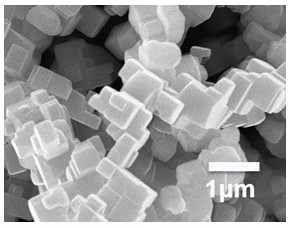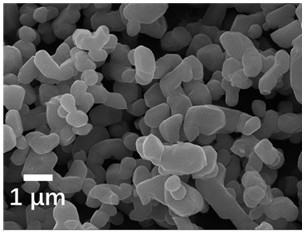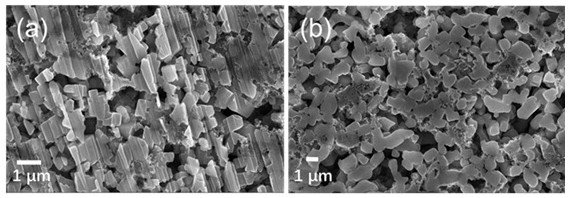Prussian blue transition metal cyanide, preparation method thereof, and positive pole piece, secondary battery, battery pack and device related to prussian blue transition metal cyanide
A technology of transition metals and Prussian blue, applied in metal cyanide, secondary batteries, battery electrodes, etc., can solve the problems of poor energy density and low gram capacity of sodium-ion batteries, which affect the commercial application of sodium-ion batteries, and achieve improvement The effect of active ion transport performance and electronic conductivity, increasing particle size and powder compaction density, and high energy density
- Summary
- Abstract
- Description
- Claims
- Application Information
AI Technical Summary
Problems solved by technology
Method used
Image
Examples
preparation example Construction
[0088] The second aspect of the present application provides a method for preparing a Prussian blue-like transition metal cyanide, according to which the above-mentioned Prussian blue-like transition metal cyanide can be prepared. The preparation method of Prussian blue transition metal cyanide comprises the following steps:
[0089] S1, providing a first solution containing transition metal cations, where the concentration of transition metal cations in the first solution is ≥0.1 mol / L.
[0090] S2, providing the second solution comprising the A salt of transition metal cyanate, the concentration of transition metal cyanate anion in the second solution is ≥0.1mol / L, and A is selected from one of alkali metal ions and alkaline earth metal ions or Several kinds.
[0091] S3, adding one of the first solution and the second solution to the other at a flow rate of 10cm / s~100m / s and within 0.5h~48h under stirring conditions Mixing, co-precipitation chemical reaction occurs, and a...
Embodiment 1
[0162] S1, under the condition of 25°C, disperse 6.292g of manganese chloride, 35g of sodium chloride, and 2.48g of sodium thiosulfate (antioxidant) in 100mL of deionized water to obtain the first solution.
[0163] S2, under the condition of 25° C., disperse 19.203 g of sodium ferrocyanide in 100 mL of deionized water to obtain a second solution.
[0164] S3, after heating the first solution to 80°C, inject the second solution at 25°C into the first solution within 10 hours at a flow rate of 2m / s using an injection needle with an inner diameter of 0.6mm to cause a co-precipitation chemical reaction, At the same time, magnetic stirring was carried out at a speed of 800 rpm / min. The needle of the injection needle is inserted below the liquid level to ensure the mixing effect.
[0165] S4, the obtained suspension was aged at 80°C for 24 hours with stirring, so that the small grains were dissolved and the large grains continued to grow.
[0166] S5, after suction filtration, wa...
Embodiment 2、11
[0168] Similar to Example 1, the difference is that the antioxidant in the first solution is 1 g of ascorbic acid, and the remaining parameters are shown in Table 1.
PUM
| Property | Measurement | Unit |
|---|---|---|
| Compaction density | aaaaa | aaaaa |
| Thickness | aaaaa | aaaaa |
| Compaction density | aaaaa | aaaaa |
Abstract
Description
Claims
Application Information
 Login to View More
Login to View More - R&D
- Intellectual Property
- Life Sciences
- Materials
- Tech Scout
- Unparalleled Data Quality
- Higher Quality Content
- 60% Fewer Hallucinations
Browse by: Latest US Patents, China's latest patents, Technical Efficacy Thesaurus, Application Domain, Technology Topic, Popular Technical Reports.
© 2025 PatSnap. All rights reserved.Legal|Privacy policy|Modern Slavery Act Transparency Statement|Sitemap|About US| Contact US: help@patsnap.com



